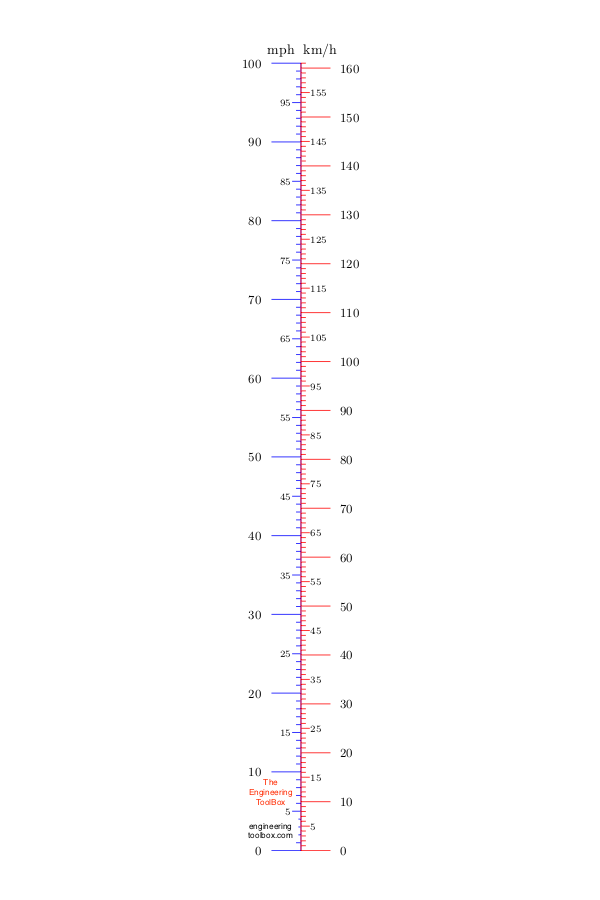When it comes to understanding speed, especially in the context of international travel or automotive performance, converting between kilometers per hour (KPH) and miles per hour (MPH) is a common task. Whether you're planning a road trip across Europe or comparing car specifications from different countries, knowing how to convert these units can be incredibly useful.
This guide focuses on converting 158 KPH to MPH, providing not only the straightforward calculation but also offering insights into why such conversions matter. By the end of this article, you'll have a clear understanding of how to perform this conversion quickly and accurately, making your driving experiences smoother and more informed.
Understanding the relationship between KPH and MPH is crucial for anyone dealing with vehicles or transportation. The metric system, used predominantly outside the United States, measures speed in kilometers per hour, while the imperial system, prevalent in the U.S., uses miles per hour. This difference necessitates frequent conversions, particularly when discussing vehicle speeds or performance metrics.
Exploring Speed Conversion: A Fundamental Guide
In today's globalized world, where information and goods are exchanged rapidly across borders, understanding different measurement systems becomes essential. For instance, when evaluating the speed of a new vehicle model produced in Europe but marketed worldwide, one must consider both KPH and MPH. In this context, converting 158 KPH to MPH serves as a practical example of bridging these two systems.
To provide a better shopping experience, our website uses cookies. Continuing use of the site implies consent. ×. Search. Log in; Sign up. The importance of such conversions extends beyond mere convenience. It impacts everything from international trade to personal travel plans, ensuring clarity and consistency in communication about speed and distance.
For those unfamiliar with the process, converting KPH to MPH involves multiplying the speed in KPH by approximately 0.621371. This simple mathematical operation transforms any given speed from the metric to the imperial system, allowing for seamless comparisons and evaluations. Applying this formula to 158 KPH results in roughly 98.2 MPH, illustrating the ease with which these conversions can be performed.
From Horsepower to MPH: Unlocking Vehicle Performance Secrets
Estimating a vehicle's quarter-mile speed based on its horsepower offers valuable insights into its potential performance capabilities. While seemingly unrelated at first glance, connecting horsepower figures to expected MPH outcomes provides enthusiasts with a deeper understanding of what makes their cars tick. This knowledge empowers drivers to make informed decisions regarding modifications and upgrades aimed at enhancing overall performance.
I had to put it on MPH and set it back in KPH and voila! Ford nav came back in KPH. Strange bug. The setting is in option / general menu. Hey guys/gals have a question about adding seat heating controls to the climate bar /unreal engine. I don't have cooling just heating. Ended up liking the climate bar and the empty space on either end is driving me crazy. Such scenarios highlight the intricate balance between technology integration and user preferences within modern automotive designs.
In @Livnitup spreadsheet (master's work of art btw), in the common section, detailed data points outline various aspects of vehicle behavior under different conditions. These spreadsheets serve as invaluable resources for tuning enthusiasts seeking precise control over every aspect of their rides, including navigation settings and comfort features like heated seats. Understanding these nuances enables users to personalize their driving experiences effectively.
Racing Against Time: Navigating High-Speed Zones
SPEED GAUGE Don't Want To Pass 158 MPH. Imagine touching 158 mph at 6010 rpm in 5th gear, yet the speedometer refuses to budge past that mark due to limitations imposed by the PCM reporting cap at 255 KPH. Such situations underscore the complexities involved in designing reliable instrumentation capable of handling extreme velocities without compromising accuracy or functionality.
Probably because 158 mph equals 255 KPH, and 255 holds significance in computer science for reasons others explain better than I can. Hasn't stopped many from pushing boundaries though, whether racing down Germany's famed Autobahns or testing limits elsewhere around the globe. These high-speed adventures captivate audiences worldwide, showcasing human ingenuity combined with cutting-edge engineering prowess.
And those really low ones make your heart speed up, get over and they'll go by at 200, and I don't mean km/hr. On the Autobahn in Germany at 158 MPH. WATCH THIS 🏁. Experiencing such thrilling moments firsthand leaves lasting impressions, fueling dreams of future innovations designed to elevate our collective understanding of speed and motion ever higher.

